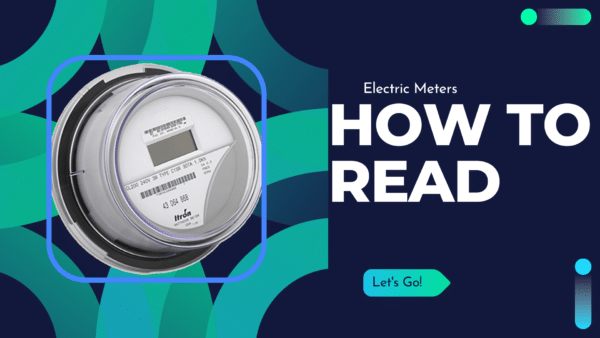Types of Electric Meters:
Before we dive into the specifics of reading your electric meter, it’s essential to know the type of meter you have. There are several common types:
Analog (Dial) Meters: Analog meters have multiple rotating dials with numbers on them. Each dial represents a digit, and they move in opposite directions. Reading these dials can be a bit tricky, but we’ll break it down for you.
Digital Meters: Digital meters are the most common type today. They display your energy usage as a series of numbers. Reading these is straightforward, but you need to know where to find the information.
Smart Meters: Smart meters are becoming more prevalent. They provide real-time data and are often accessible online or through a mobile app. Reading a smart meter is as simple as checking your phone.

Reading an Analog (Dial) Meter:
Analog meters have several dials, each with a pointer. Here’s how to read them:
- Start with the dial on the far left and work your way to the right.
- Read each dial’s number that the pointer has passed. If the pointer is between two numbers, take the lower number.
- Note down the numbers from left to right to get your electric consumption reading.
Reading a Digital Meter:
Digital meters are much easier to read:
- Locate your digital meter. It’s typically found on the exterior of your home or in a utility room.
- The display should show a series of numbers. Write down all the digits displayed. If your meter shows decimals, include those as well.
- This number represents your total electricity usage in kilowatt-hours (kWh).
Reading a Smart Meter:
Reading a smart meter is even simpler:
- Check if your energy provider offers an online portal or a mobile app. If they do, log in to access your real-time energy usage data.
- Your smart meter will provide you with detailed information about your electricity consumption, including graphs and usage patterns.
Understanding Your Electric Bill:
Once you’ve read your electric meter, it’s essential to understand how this information translates into your electric bill. Typically, you’ll be billed based on the number of kilowatt-hours (kWh) you’ve consumed. Your bill may also include other charges, such as taxes and service fees.
Conclusion:
Learning how to read your electric meter is a valuable skill that empowers you to monitor your energy consumption and make informed decisions about your electricity usage. Whether you have an analog, digital, or smart meter, understanding how to read it is a step toward better energy management and potentially saving on your energy bills. Keep in mind that if you ever have questions or concerns about your electric meter or bill, don’t hesitate to contact your utility provider for clarification and assistance.




